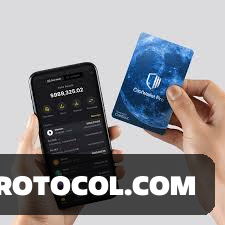What Do We Mean By Cold Wallet? The main idea behind any cold storage is to eliminate the threat of hackers getting to your private keys and stealing your crypto.This is done by storing your private keys offline and ultimately not being connected to the internet to store your crypto, which in theory reduces the risk of cyber-attacks.
Types of Cold Wallets
Hardware Wallets
These are physical devices made for storing your crypto’s private keys. You only connect to the internet if and when you make a transaction. Popular hardware wallets include Material Bitcoin, Ledger, Tangem, and others.
➕Advantages
High-security.
Portability.
Tangible object for keeping your crypto.
➖Disadvantages
Costly (the initial upfront payment for the hardware device).
Risk of physical damage or loss of object.
Paper Wallets
A paper wallet is a printed or written document that contains your private and public keys. This information is usually created by a software program.
➕Advantages
Low cost.
Offline security.
➖Disadvantages
Fragile material.
User error when printing (if printed on a public printer or exposed online when generating keys and QR Code).
Air-Gapped Computers
An air-gapped computer is a device that is never connected to the internet. It’s used to generate and store your private keys, make transactions, and sign them offline. These transactions are then transferred to an online connected device that sends it to the blockchain (usually with a USB or QR Code).
➕Advantages
High Security
Diveristy and versatility (can be used for storing private keys but also generating wallets and signing off on transactions).
➖Disadvantages
Large and bulky machine.
Complex setup for creating transactions, generating wallets, and maintaining air-gapped features from offline to online devices.
5 Potential Vulnerabilities of a Cold Wallet
While cold wallets are designed to provide the highest security measures for your crypto by keeping your private keys offline, they are not entirely free from vulnerabilities. Understanding these potential risks is crucial.
Let’s go over some cold wallet vulnerabilities and share some real-world examples so that you can learn from others’ mistakes.
1.Physical Theft: This is probably the easiest way for a hacker get gain control of your private keys and crypto. If your cold wallet falls into the hands of a knowledgeable hacker, all they need to do is unlock your PIN and passcode.
🚨This is why seed phrase storage on a separate system is VITAL. If you lose your cold wallet or if it is physically stolen, you can recover your private keys and set them onto a new hardware wallet before the thief has a chance at it.
DO NOT EVER ENTER YOUR SEED PHRASE ONTO A DIGITAL DEVICE OF ANY KIND.
2.Firmware Attacks: Hardware wallets that have software programs implemented into them can be vulnerable to firmware attacks if the attacker has physical access and can alter the device.
Probably the most famous firmware hacking is when a 15-year-old hacker named Saleem Rashid, unlocked a Ledger Nano S by uploading modified firmware onto the device that revealed the user’s private keys.
3.Tampering in the Supply Chain: This happens during the production or the shipping process of the cold wallet before it reaches the customer.
Perhaps one of the “rarest” hacking vulnerabilities, it is still possible. Remember to always buy cold hardware wallets from authorized retailers and check that the package hasn’t been opened or tampered with.
5.Phishing Scams: hackers and scammers use pretenses like names, emails, websites, and phone calls, to trick you into revealing your private keys or seed phrases.
Unfortunately, this is probably the most common and easiest hacking trick in the book.
The responsibility is solely on you: the user, to be aware of fake accounts and personal in order not to give away your private info.
5.Damage or Loss: Having your cold wallet damaged by simple wear and tear or elements, such as water or fire can be detrimental to its recovery. Lossing it all together without a proper recovery phase setup can lead to permanent loss of your funds.
Picking a strong hardware wallet that is water and fire-resistant is a good starting point for safeguarding your wallet. Keeping the physical device in a secret and safe location, like a security box at home is usually the best solution.
Simple Tips for Protecting Your Cold Wallet and Crypto
➡️ Use a reputable hardware wallet.
➡️ Always purchase hardware wallets from official and authorized retailers.
➡️ Verify the authenticity of the device upon receipt.
➡️ Enable PIN protection.
➡️ Set up a strong PIN.
➡️ Back up your recovery phrase, preferably on physical forms, like an engraved cold card.
➡️ Update firmware regularly.
➡️ Be cautious of phishing attempts.
➡️ Never share your private keys or recovery phrases with anyone.
